| The beef cuts used for sautéing should not be more than ½ inch thick. The meat should be patted with paper towels in order to remove excess moisture, which helps the meat brown more quickly. |
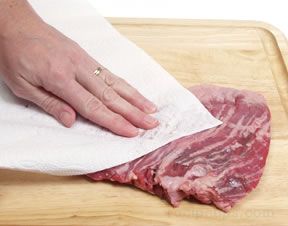 |
| The beef can be seasoned in any way that is desired before it is placed in the pan. |
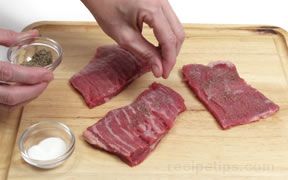 |
|
In order to sauté beef properly, the skillet must be preheated on the stove before adding any oil. Medium-high heat is sufficient to warm the pan to the proper temperature. If the heat is too high, the oil will begin to smoke shortly after it is poured into the pan.
Pour 1 or 2 tablespoons of oil into the heated skillet. (Do not place the meat into the pan if the pan and oil are not heated. This causes the meat to absorb the oil and stick to the pan. Always preheat the skillet first.) A nonstick pan or a well-seasoned iron skillet may not require as much oil. |
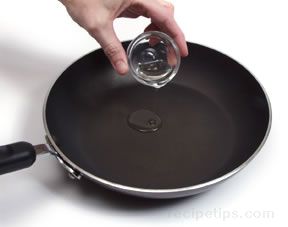 |
| The oil should sizzle when the meat hits the pan: if it doesn't sizzle, it is an indication that the pan and oil are not hot enough. |
 |
| A tongs or spatula should be used to turn the meat once in the pan. Never use a fork because piercing the meat with a fork may allow juices to escape which will decrease the tenderness and flavor of the finished dish. The meat should take no more than 2 to 3 minutes to cook per side. |
 |
| Sautéed beef is often served with a sauce made from the pan drippings. In order to make a sauce, the meat is removed from the pan and is covered to keep it warm. |
 |
| A small amount of liquid, such as broth, stock, juice, or wine is added to the pan in order to loosen the flavorful caramelized bits that have stuck to the pan during cooking. This is known as deglazing. |
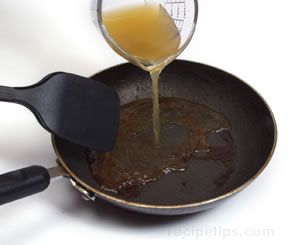 |
| After the liquid has reduced by about half, other herbs and spices are added, depending on the type of sauce desired. |
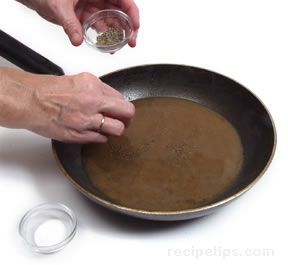 |
| Some sauces require that cream or butter be added in order to create a smoother flavor and texture. |
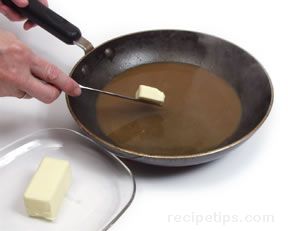 |
| Most sauces require only 2 or 3 minutes to complete and are served with the sautéed beef immediately so that the optimum flavor of the beef and sauce can be enjoyed. |
 |

